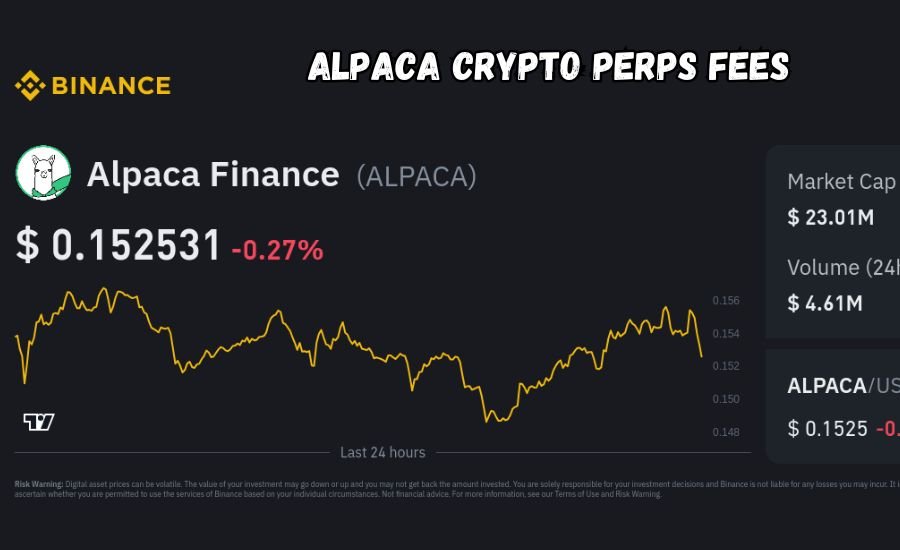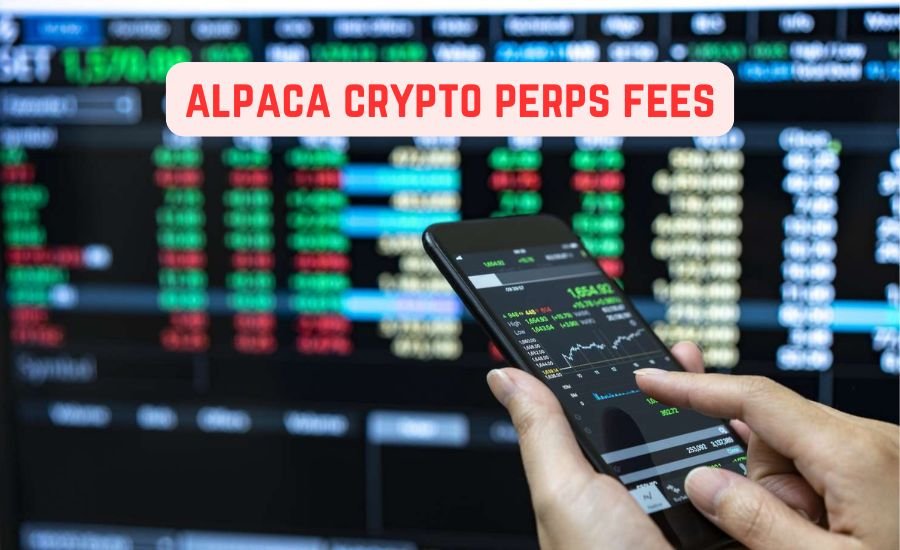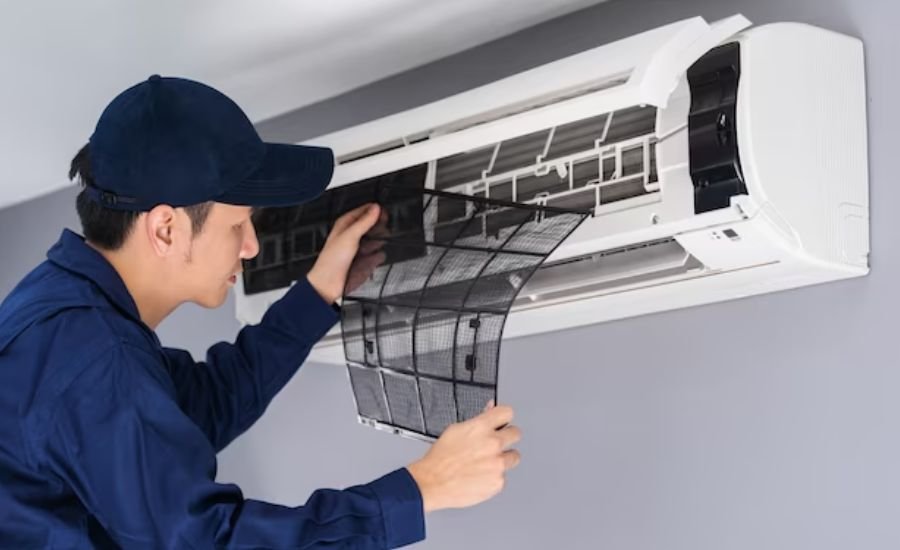Alpaca crypto perps fees are essential if you trade crypto on Alpaca. The costs depend on how much you trade and the kind of order you use, like maker or taker orders. Learning about these fees helps you save money and trade smarter.
Alpaca’s perps fees may initially seem tricky, but don’t worry! This post will break them down step by step. We’ll also explain the difference between maker and taker fees and show how the fees change with your trading volume over 30 days. Keep reading to become a pro at managing your Alpaca crypto perps fees!
What Are Alpaca Crypto Perps Fees?
Alpaca crypto perps fees are the small charges applied whenever you trade perpetual contracts on the Alpaca platform. Unlike other types of trades, these contracts, known as perps, are unique because they have no expiration date. Alpaca applies specific fees to manage your transactions smoothly when you trade perps. Each fee depends on the type of order you place, such as a maker or taker order, and your trading volume over the past 30 days.
Liquidity plays a vital role in crypto trading. It is the flow of money that keeps markets functional. A maker adds liquidity by placing new orders in the order book and waiting for someone to match them. A taker order, on the other hand, removes liquidity by quickly matching existing orders. Alpaca applies different fees for maker and taker trades, usually rewarding maker orders with lower fees. Knowing how these fees work helps traders make more intelligent choices while trading.
Alpaca’s fee structure follows a tier-based model, meaning the more you trade, the less you pay in fees. This encourages frequent trading and helps users plan their activities to reduce costs. Understanding these tiers is essential, especially for those who trade large volumes. Even a slight difference in fees can add to significant savings over time. Whether you’re just starting or a seasoned trader, tracking your activity and planning trades wisely is essential to benefit from Alpaca’s fee system.
Why Alpaca Charges Perps Fees for Crypto Trades
Alpaca crypto perps fees are necessary to maintain the exchange and ensure smooth and reliable operations. Like most crypto trading platforms, Alpaca must cover the costs of running a system that allows millions of daily trades. These fees help pay for the platform’s technology, infrastructure, security, and customer service. Such fees are necessary to maintain the quality and speed of the service users expect.
Perpetual contracts come with additional risks because they are traded continuously without expiration dates. Alpaca manages these risks by charging fees that help control liquidity and reduce market instability. When traders pay these minor charges, they contribute to keeping the platform functional and ensuring trades happen without delays. This system benefits the platform and its users by creating a secure trading environment.
Understanding these fees early on can help new traders avoid surprises and allow them to plan their trades effectively. Planning your trading strategy to minimize costs can significantly affect long-term profits. While the fees may seem small on each trade, they accumulate over time, especially for active traders. Therefore, learning how to balance trades and costs is essential for anyone using Alpaca.
Maker vs Taker: How They Affect Alpaca Crypto Perps Fees

The maker and taker fee model is essential to how Alpaca crypto perps fees work. A maker places an order that adds liquidity to the market by adding new orders to the order book. This means the maker’s trade still must be completed but waits for a buyer or seller to match it. Makers are rewarded with lower fees because their trades keep the market moving smoothly by creating more trading opportunities for others.
On the other hand, a taker removes liquidity by placing an order that is instantly executed against an existing one in the order book. Taker orders are faster because they fill immediately but have higher fees. This is because takers rely on the liquidity makers’ provision, and the exchange charges slightly more for this convenience. Alpaca’s fee model rewards patient traders who place lower-cost maker orders.
For example, suppose you place a limit order (maker) to buy Bitcoin at a specific price. In that case, your order stays on the order book until a seller matches it. This helps the market stay liquid, so you pay a lower fee. But you immediately place a market order (taker) to buy Bitcoin. In that case, your trade is executed instantly, and you pay a higher fee for the quick service. Combining both orders can help traders optimize their strategies and reduce costs.
Breaking Down the 30-Day Volume Calculation for Fees
Alpaca determines your trading fees based on the total crypto volume you have traded over the last 30 days. Only crypto trades count toward this calculation—equity trades, like stocks, don’t affect your crypto fee tier. This rolling 30-day volume system ensures that your fees are continuously adjusted based on your recent activity. If your trading volume goes up, you’ll move to a higher tier with lower costs, but your fees will return to the previous level if it drops.
For example, if your trading volume over the past 30 days is $99,500, you’ll stay in the first fee tier, where maker fees are 0.15% and taker fees are 0.25%. If you trade just $500 more, bringing your volume to $100,000, you’ll move to the next tier with reduced fees starting the next day. Even small increases in trading volume can make a difference in the fees you pay over time.
This fee system encourages users to stay active and plan their trades to move up the tiers. Monitoring your monthly trading volume helps you avoid missing out on lower fees. The rolling 30-day system is designed to benefit both regular traders and those who trade in bursts. Staying consistent with your trades ensures you always get the best possible fee rate.
How to Lower Your Alpaca Crypto Perps Fees with Trading Volume
Reducing alpaca crypto perps fees starts with increasing your trading volume. The more you trade, the more likely you will move to a higher tier with lower costs. Planning your trades carefully across the month can help you reach the next tier. Many traders set volume goals to make sure they cross the threshold required for lower fees.
Some users prefer to make small, frequent trades to build their volume slowly, while others place large trades at once to quickly qualify for better rates. Both strategies work as long as your total trading volume increases. Tracking your activity and making adjustments ensures you get all the discounts. If your volume falls close to a tier limit, making a few more trades is worth avoiding slipping back to a higher fee tier.
Active traders benefit the most from this system. The tier model rewards those who trade regularly and encourages users to stay engaged with the platform. Recording your trades and monitoring your 30-day volume helps you get the best possible rates. Over time, following this approach can lead to significant savings on trading fees.
What Happens if You Trade More on Alpaca?
The more you trade on Alpaca, the lower your Alpaca crypto perps fees will be over time. Alpaca rewards users who increase their 30-day trading volume by placing them in higher tiers with reduced fees. This encourages traders to stay active and benefit from cost savings. As you move up the tiers, the percentage fee for both maker and taker trades decreases.
For example, traders with a volume under $100,000 fall in the first tier and pay higher fees than those trading over $500,000. If you trade even more, like reaching $1,000,000 in volume, your fees drop significantly. This rolling 30-day volume system keeps traders motivated to aim for the next tier, ensuring they can save more by strategically increasing their trades.
Planning your trades becomes essential, as small increases in volume can unlock new discounts. By tracking your volume regularly, you can ensure that you remain in a higher fee tier. Minimizing fees through innovative trading strategies is essential for traders looking to grow profits. The fee system makes trading affordable and keeps traders engaged in the platform.
Alpaca Crypto Perps Fees for Beginners: Simple Guide

The system may need to be clarified for beginners, starting with alpaca crypto perps fees. Still, it’s actually easy to understand with a bit of guidance. When you buy or sell perpetual contracts, fees are applied based on the type of trade—a maker or taker order—and your 30-day trading volume. This means that even your small trades will count towards lowering future fees.
As a beginner, you will likely start in the first fee tier, where maker trades are charged 0.15% and taker trades 0.25%. However, don’t worry too much about fees early on. Focus on learning how to trade and plan your orders carefully. By gradually increasing your volume, you’ll soon qualify for lower costs. Patience and consistency are crucial to getting better rates on Alpaca.
Using maker orders whenever possible is an excellent way for beginners to reduce costs, as maker fees are generally lower. As you gain experience, you’ll discover that tracking your trading volume over time helps you manage expenses effectively. Alpaca’s fee structure is built to support beginners by offering room to grow and achieve savings as they become more active traders.
Do Maker Orders Have Lower Perps Fees on Alpaca?
Yes, maker orders on Alpaca generally come with lower crypto perps fees than taker orders. Maker orders add liquidity to the market by placing new trades in the order book, which helps other traders find opportunities. As a result, Alpaca rewards users who place maker orders by offering them discounted fees.
Maker fees start at 0.15% for the lowest volume tier but can drop as low as 0.00% for traders with very high volumes. On the other hand, taker fees start at 0.25% and go down to 0.10% for the highest tier. The difference might seem small, but these savings can add up significantly for frequent traders.
Using maker orders also teaches traders to be patient, as these trades take longer. By carefully placing limit orders, you can secure lower fees while waiting for the market to match your trade. This strategy works well for those seeking to minimize costs and grow their profits.
Why Taker Fees Are Higher in Alpaca Crypto Perps
Taker fees in alpaca crypto perps fees are higher because taker orders remove liquidity from the market. When you place a taker order, your trade is executed immediately against existing orders in the order book. While this ensures fast execution, it comes at a higher cost since the platform charges more for the convenience of quick trades.
Taker fees start at 0.25% for the lowest tier, while maker fees start lower at 0.15%. Both fees reduce as your trading volume increases, but taker trades remain slightly more expensive. The idea is to encourage users to provide liquidity through maker orders, which keeps the market active and efficient.
Taker orders are still an excellent option for traders prioritizing speed over cost. However, relying only on taker orders can become expensive if you trade frequently. A good strategy is to mix maker and taker orders based on your needs, ensuring that you save on fees while executing trades when necessary.
Understanding the Fee Tiers: Alpaca Crypto Perps Explained
Alpaca’s fee tiers for crypto perps fees are based on your 30-day trading volume, with higher volumes unlocking better rates. The system works like a ladder—when your trading volume increases, you move to the next tier and pay less in fees. If your volume decreases, you might drop to a lower tier and pay more.
The first tier, for example, applies to traders with a volume under $100,000 and charges 0.15% for maker fees and 0.25% for taker fees. As you reach higher tiers, such as $500,000 or more, these fees decrease, encouraging users to trade more. The highest tier offers 0.00% maker fees and 0.10% taker fees, an excellent reward for active traders.
By keeping track of your 30-day volume, you can plan your trades to maintain or move to a higher tier. This fee structure benefits small and large traders, allowing everyone to control their trading costs effectively.
How Alpaca Crypto Perps Fees Work with Small Trades

Even with small trades, alpaca crypto perps fees apply and can add up over time. Small traders often stay in the first fee tier, paying 0.15% for maker trades and 0.25% for taker trades. While these fees might seem minor, they become essential when trades accumulate over the month.
One way to save on fees with small trades is to use maker orders whenever possible. Maker trades reduce your costs and contribute to the platform’s liquidity. Even small savings can grow over time, especially if you trade consistently.
Alpaca’s tier-based fee system ensures that every trade counts toward your 30-day volume. This means that even small traders can move to the next tier if they stay active and manage their trades strategically.
Are There Discounts for High-Volume Traders?
Yes, alpaca crypto perps fees offer significant discounts for high-volume traders. The more you trade, the more you save, with higher tiers unlocking lower fees. For example, traders with over $1,000,000 in volume enjoy fees as low as 0.08% for maker trades and 0.18% for taker trades.
These discounts greatly incentivize active traders to stay engaged with the platform. Users can ensure they remain in higher tiers by planning large trades or spreading trades evenly throughout the month. The rolling 30-day volume calculation also ensures that recent activity counts, so traders can take breaks immediately without worrying about losing discounts.
Comparing Alpaca Crypto Perps Fees with Other Platforms
Alpaca crypto perps fees are competitive compared to other crypto platforms, especially for high-volume traders. While some exchanges charge flat rates regardless of volume, Alpaca’s tier system allows frequent traders to save more. The maker/taker model also encourages users to participate actively, creating a better trading environment for all.
Other platforms may have different structures, but Alpaca offers 0.00% maker fees in the top tier. This makes it an attractive option for traders who trade large amounts regularly. Comparing fees across platforms helps users find the best fit for their trading style.
Tips to Manage Alpaca Crypto Perps Fees Like a Pro

To manage alpaca crypto perps fees effectively, traders need to be strategic. Start by tracking your 30-day volume regularly to ensure you stay in the best tier possible. Planning your trades in advance and spreading them out can also help you reach higher tiers without rushing.
Another smart strategy is to use a mix of maker and taker orders. Maker orders offer lower fees, while taker orders provide fast execution when needed. By balancing both types, you can keep your costs low while taking advantage of market opportunities.
Staying informed about Alpaca’s fee structure is critical to maximizing your savings. Review your trades and adjust your strategies as needed to stay in control of your fees.
Conclusion
Managing alpaca crypto perps fees is all about planning and intelligent trading. By understanding how fees work, traders can use maker orders to save money and reach higher tiers with better discounts. Even small trades can make a difference if done consistently over time. Tracking your 30-day volume helps you stay in the best fee tier and cut costs.
Whether you are a beginner or an experienced trader, knowing when to use maker or taker orders will help you trade smarter. Alpaca’s fee system rewards active traders, so staying engaged is an excellent way to lower fees. With some practice and planning, anyone can manage their fees like a pro and keep more profits.
Continue Reading: Floreve-force-dragon-power-us
FAQs
Q: What are Alpaca crypto perps fees?
A: Alpaca crypto perps fees apply when trading perpetual contracts on Alpaca, based on your trade type (maker or taker) and 30-day trading volume.
Q: How do maker and taker fees differ?
A: Maker fees are lower because they add liquidity by placing limit orders on the order book. In comparison, taker fees are higher since they remove liquidity with market orders.
Q: How is the 30-day trading volume calculated?
A: The 30-day volume includes all crypto trades made within the last 30 days, but stock trades are not counted toward this calculation.
Q: Can I get discounts on Alpaca crypto perps fees?
A: Yes, as your 30-day trading volume increases, you move to higher tiers, which offer lower maker and taker fees.
Q: What is the lowest fee tier on Alpaca?
A: The lowest tier offers 0% maker fees and 0.10% taker fees, available when your 30-day trading volume exceeds $100 million.
Q: Are fees charged on both buy and sell orders?
A: Alpaca charges fees on buying and selling trades based on whether the order is a maker or taker trade.
Q: How can I reduce Alpaca crypto perps fees?
A: To reach higher tiers, you can lower fees by placing more maker orders and increasing your 30-day trading volume.
Q: Does Alpaca charge fees for stock trading, too?
A: No, stock trading on Alpaca remains commission-free, and only crypto trading has fees.



